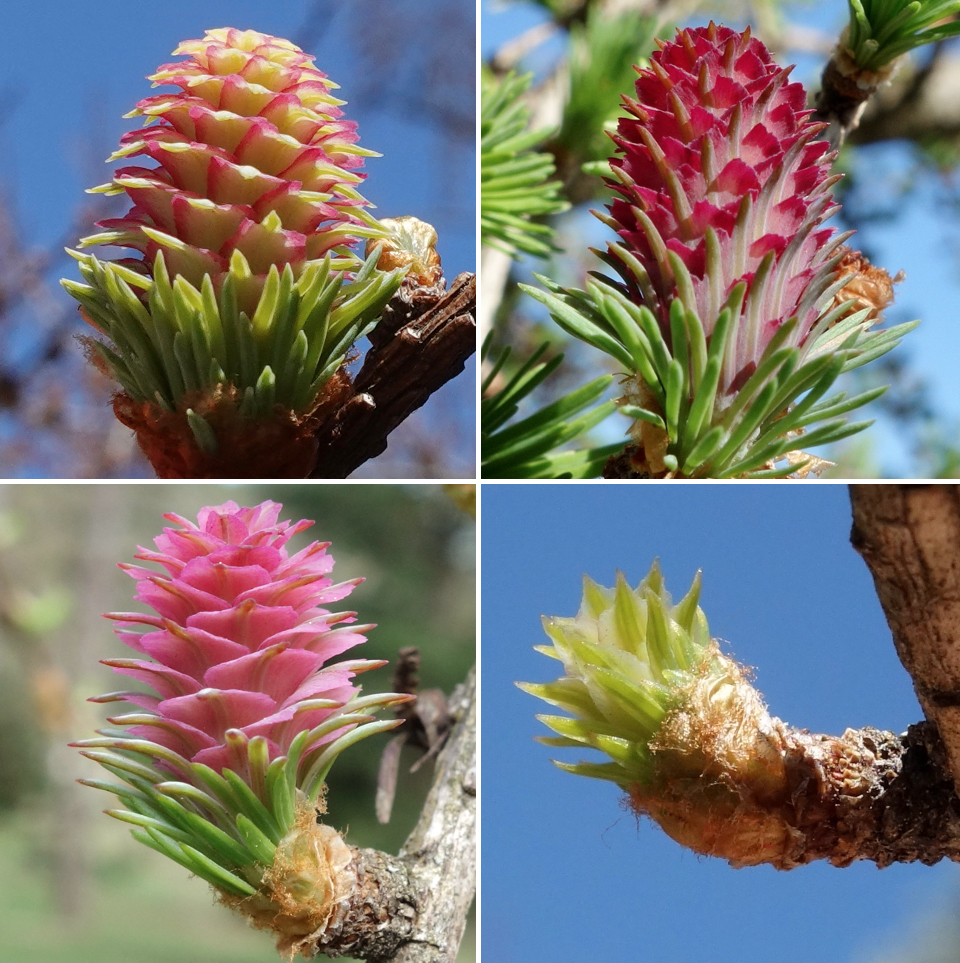Putting aside the astronomical start of spring (equinox), for me, there is only one way to reliably determine the beginning of spring at the Arnold Arboretum: bud break in the (deciduous) larches and the wonderful appearance of future seed cones. Every year, I make a set of pilgrimages to various larches in the living collections (currently 169 trees representing six species) and gawk at the young female cones that range in hue from crimson, to pink, to green edged with pink, to green. This past Wednesday, the sun broke out and it was perfect.
Over the years, I have begun to appreciate the subtleties of these small, yet exquisite, cones. Not only does the coloration differ between species, but also between individuals within a species. No two trees are ever exactly alike when it comes to spring larch cones. The top two photographs are of very differently pigmented cones from two individuals of Larix kaempferi, the Japanese larch (1097*C and 11276*A). Lower left, is a cone at peak color from a Siberian larch, Larix sibirica (14948*A). Larix gmelinii var. olgensis, the Olga Bay larch (365-97*A), lower right, tends to either lack significant red pigmentation or have just a tinge around the margins of the ovuliferous scales (at least in the specimens I have seen).
Make your pilgrimage to the larches as soon as possible since these cones will all turn green shortly. Cones are small (less than half an inch) and often scattered on only a few of the lower branches. If you need a great tree to practice finding cones, head to Peters Hill and stare into the pendulous branches of two European larches (Larix decidua var. decidua), accessions 1296-83*A and 1296-83*B, that are right next to each other. Once you find one cone, more will magically appear! And note that one tree bears deep red cones, while the other bears pinkish cones. Genetics at work.

If you crave more Arnold Arboretum plant images, follow Ned’s Posts on Instagram @nedfriedman.
From “free” to “friend”…
Established in 1911 as the Bulletin of Popular Information, Arnoldia has long been a definitive forum for conversations about temperate woody plants and their landscapes. In 2022, we rolled out a new vision for the magazine as a vigorous forum for tales of plant exploration, behind-the-scenes glimpses of botanical research, and deep dives into the history of gardens, landscapes, and science. The new Arnoldia includes poetry, visual art, and literary essays, following the human imagination wherever it entangles with trees.
It takes resources to gather and nurture these new voices, and we depend on the support of our member-subscribers to make it possible. But membership means more: by becoming a member of the Arnold Arboretum, you help to keep our collection vibrant and our research and educational mission active. Through the pages of Arnoldia, you can take part in the life of this free-to-all landscape whether you live next door or an ocean away.
